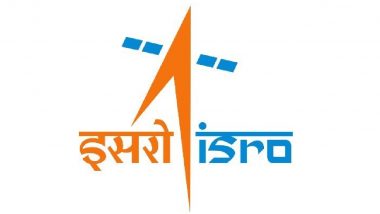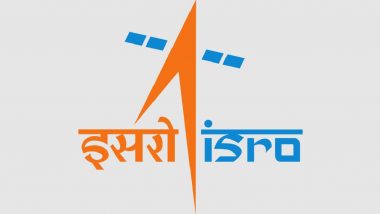Hong Kong - Recently, TickerWin, the leading market research firm, has released a research report " VIYI Algorithm with $400 Million Valuation Will Merge with Venus, Reveal the Secret of SPAC ". "Gambling with other people's money." At this year's shareholder meeting, Buffett defined SPAC (Special Purpose Acquisition Company), while Munger called it "easy money" because he didn't like the idea of cutting leeks for fraudulent investments.
The two investment seniors severely blamed SPAC of speculation and said it was a byproduct of new investors into stocks. No one can tell you when the craze will end, Buffett said. Despite accusations from Buffett and Munger, SPAC has swept the world. Blackstone, KKR, CITIC Capital and other top investment institutions have already entered the bureau. Star entrepreneurs such as Richard Li, son of Li Ka-shing, Fu Wei, founder of Cambridge Capital, Wang Shi of Vanke, SoftBank founder Justice Son, Hedge Fund boss Bill Ackman and even NBA star O'Neill have all entered the SPAC.
The reason why SPAC is fanatical is because this model concentrates the characteristics and purposes of financial products such as direct listing, overseas mergers and acquisitions, reverse acquisition, private placement, which can provide more space for professional asset managers and is a more economical and effective way of IPO. For example, it takes about a year to prepare for one IPO, while SPAC can skip complex procedures such as roadshows, hearings, and financial statements reviews to reduce the process to within half a year.
Retail investors get the opportunities and rights to invest in early-stage quality companies
SPAC is Special Purpose Acquisition Company. SPAC model listing refers to a new cash shell company as the listing entity, acquiring one (or more) private company with the funds raised after the first IPO, that is, SPAC merger and acquisition transaction (De-SPAC Transaction), to realize the curve listing of the private company, from which the sponsors and investors of SPAC realize the return on investment.
Simply, the existence of SPAC's is to go public and then find a target company within 18 to 24 months to complete the acquisition. If this channel is smooth, then a multi-party win-win situation can be formed. Companies can go public earlier, faster with lower cost. According to the current IPO listing standards, some enterprises with high growth expectations but difficult to short-term cash can detour SPAC—At present, the main target companies are focused on information technology, health care, optional consumption and other emerging industries. Entrepreneurs can save a lot of time and energy spent in financing.
Initial 5% investors (most of the management team) can naturally have low-cost investment leverage. It should be noted that the ownership structure of SPAC allows the founder to acquire a higher proportion of equity at a lower cost. The 5% of initial investment is converted into 20% class B common stock upon completion of the IPO. In other words, the management team/investor puts in a little money and gets a 20%-30% stock. This is the main source of its huge profits.
Retail investors have the opportunities and rights to invest in early-stage quality companies. Eugene Zhang, a founding partner of Silicon Valley investor TSVC Clear Valley Capital said American retail investors have generally been "stuck in institutions for a long time". — Instead of investing in early quality companies, ordinary people are forced to accept ever-higher valuations pushed up by institutions. Instead, SPAC's IPO is raised mostly within US $500 million. Retail investors have the opportunity to open blind boxes of high growth possibilities at low cost. These are the rights and opportunities that traditional IPO is impossible to give to retail investors.
Take Virgin Galactic for example. In 2017, Chamath, a former Facebook executive, set up SPAC and bought 12.5 million founder shares at a cost of $0.002 a share — a 20% share for just US $25,000. —In September of that year, the SPAC went public, offering 50 million shares at US $10, accounting for 80% of the total equity, raising US $500 million.
Two years later, the SPAC announced its proposed merger with Virgin Galactic, while Chamath personally invested US $100 million in Virgin Galactic and became the company's chairman, but kept its original management unchanged. Virgin Galactic, a commercial manned spaceflight company, earned just US $200 thousand a year with an annual loss of nearly US $140 million.
After the merger, Virgin Galactic's original shareholders held 52.5%, Chamath 13.2% and former SPAC outside investors 33.3%. Among them, 12.5 million shares were acquired by Chamath for US $25,000, corresponding to the market value of US $121 million at the completion of the merger and the corresponding yield of 4,840 times. At the same time, Virgin Galactic rose more than 300% in less than six months after the merger's listing, also bringing high returns to public investors. As former Facebook executive Chamath said: "SPAC is an innovation that opens the investment ecosystem for retail investors. It has the role of democratization and ordinary people originally have no chance to get such a return."
The target companies of M&A are mainly young companies with good growth, low R&D investment and low intensity
By comparing the distribution of "time from establishment to listing" between the target companies acquired by SPAC and traditional IPO companies, the majority of them are companies established less than 10 years, accounting for about 56%. In terms of segmentation, the majority of SPAC merger target companies were established for 5 to 6 years, accounting for 12.93%; the majority of traditional IPO companies were established for 7 to 8 years, accounting for 12.41%.
Then compare the growth of the target company acquired by SPAC in the year of acquisition with that of traditional IPO companies in the year of listing, the former's assets growth rate, income and net profit was 1690.06%, 228.55% and 1057.51% respectively, while the latter was 1130.41%, 368.86% and 427.09% respectively, and the growth of the SPAC acquisition target company was relatively high. By comparing the R&D investment of the target company acquired by SPAC in the year of acquisition with that of the traditional IPO company in the year of listing, the average R&D expenditure of the former company (US $1.39 billion, 273.79%) is lower than that of the latter company (US $31.707 billion, 545.92%). However, there were 13 companies whose R&D spending ratio exceeded 100%. Virgin Galactic Holdings, Inc. Research and development expenses amounted to US $129 million, while revenue was just US $5 million.
Is it the "an equal angel" or "the demon of cutting leeks"?
The success rate of SPAC's "blind box" games is largely determined by the SPAC founders, who are professional investors, business leaders with access to quality company resources or stars who bring their own traffic. If the stock price is successful and rising, they naturally benefit; but when the stock price falls, retail investors naturally lose money, but we can't say that SPAC is a more "tricky" and more risky trading arrangement.
Firstly, there is no risk of misappropriation of the raised funds. The vast majority of the raised funds needs to be deposited in third-party trust accounts. At most, they can only buy and sell high-grade and low-yield products such as short-term government bonds, which can not be used until shareholders agree to buy the company.
Secondly, SPAC can't buy a company casually. SPAC's board of directors needs to disclose to shareholders the reasons and relevant information for the choice of the acquisition object and obtain shareholder approval. Shareholders who are not satisfied with the acquisition plan should also have the right to request the company to redeem their shares at cost before the acquisition is implemented.
Thirdly, SPAC's acquisition has strict disclosure requirements. The U. S. securities market of course understands that SPAC's "backdoor listing" model for acquiring a company is equivalent to a IPO. SEC gives formal reviews of the disclosure, offers feedback and raises some stricter disclosure requirements for the SPAC acquisition.
Therefore, although SPAC IPO is very speculative, the managers usually try to mix in the market, if someone always wants to make money by pitting people, these people can not exist for a long time.
SPAC IPO is highly concerned by enterprises and investors
With stricter regulations in the US on overseas listing companies, listing through SPAC is the latest way for companies to enter the capital markets. If domestic enterprises want to achieve the purpose of going public through M&A with SPAC shell companies, they generally need to build a red chip structure first, take overseas holding companies as the main body of M&A transaction, complete M&A with SPAC listed companies by share exchange and finally indirectly be list. Major executives of companies generally enter the management of listed companies within a certain period after the completion of the transaction.
Therefore, companies using the reverse M&A of the listing and financing of SPAC companies in the United States is completely different from the traditional operation mode and financing mode of IPO listing in the United States. The SPAC listing financing method focuses on the characteristics and purposes of financial products such as direct listing, overseas M&A, reverse acquisition, private placement and optimizes the characteristics of various financial products to complete the purpose of enterprise listing and financing. SPAC is a new way that is more suitable for overseas financing listing after IPO, backdoor listing and APO.
The two companies that attracted the most attention from investors in the second half of the year were Iconiq Motors and Central Processing Algorithm (VIYI Algo).
Iconiq Motors, a electric car company could be valued at about US $4billion in a backdoor listing in the US as soon as the end of the year. Founded in 2014, Iconiq Motors is a high-end electric vehicle manufacturer with offices in Tianjin, Shanghai and Dubai with partners including auto suppliers Magna Steyr and Microsoft. In April, Iconiq Motors received investment from the driverless car brand AutoX, which said the two sides would jointly build the world's first self-driving technology new energy vehicle company to promote mass production of L4-class driverless cars.
According to various media reports, VIYI Algo, a subsidiary of WIMI Hologram announced that it would go public through a merger with SPAC. In this transaction, VIYI Algo is valued at US $400 million. Venus will be renamed MicroAlgo Inc. after the deal closes. The merger will be completed in the fourth quarter of 2021. VIYI Algorithm is committed to the development and application of custom central processing algorithms. VIYI Algorithm's service range includes algorithmic optimization, accelerating computing power, lightweight data processing and data intelligence services without hardware upgrades. VIYI Algorithm effectively provides software and hardware optimization for customers through custom central processing algorithms. This is the driver of VIYI Algorithm's long-term development.
SPAC IPO is creating opportunities for public investors to invest in early-stage businesses. Most of the major overseas exchanges have adopted or are actively studying the introduction of SPAC model to improve the attractiveness of innovative and entrepreneurial enterprises. As an innovative financial tool, SPAC really has its advantages—It does give "unprocessed jade" companies earlier and more convenient financing opportunities. In the long run, listing on SPAC will also become an option for startups.
About TickerWin
TickerWin is a leading market research firm in Hong Kong. They have built a proprietary research platform in the financial markets. TickerWin focuses on emerging growth companies and paradigm shifting companies. TickerWin has a team of professionals with a proven track record in market research reports, industry analysis and financing trend analysis.













 Quickly
Quickly





















